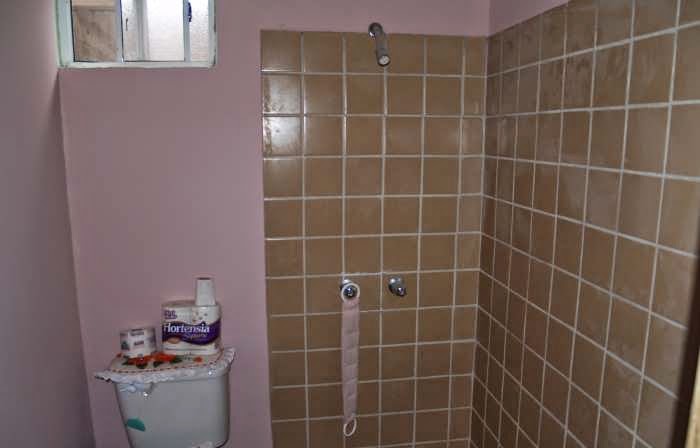 |
| Karen Maxwell pitches an empty cement bucket to Dennis Dooley |
I had a girl friend a few years ago who didn't grasp the concepts of fidelity or loyalty, but she sure knew how to eat soup properly. You spoon up the soup by moving it away from you in the bowl, she explained. That's the polite way to do it. She clearly had class.
Using that method, she would have lasted about 30 seconds on the gravel pile today.
The cement mixer was chugging, the bucket line was pulsating, the empty buckets were flying, and it was all I could do to drag shovel loads of gravel into the 5-gallon mud buckets between my feet, to keep up with the process. Gravel and sand buckets were being dumped into the mixer along with water as fast as the crew could fill it, before dumping the load in the "canoe" from which another crew scooped up the cement for the bucket line.
We were at America's property today, filling the cement blocks that were going to frame the foundation for her new home.
The photo below shows that work site. That's America on the far left, and Roberto, an Esperanza employee, who helped in the process. The wall of cement blocks define the frame into which a floor will be poured. But today the point was to fill the blocks in that wall with cement, and brace the bottom of the wall as well.
 |
| America, Roberto, and the frame for the foundation. |
And just below is a photo of Zachary Chambers, hefting a bucket of gravel, or sand, into the mixer, while the bucket brigade awaits that load to be dumped into the canoe.
 |
| Zachary loads the mixer. |
 |
| Deana Barrow scoops cement out of the "canoe" to pour into a bucket. Susan Nadeau will heft the load and pass it to the first person in the "receiving line." |
 |
| As an emptied bucket flies past her toward the head of the bucket line, America prepares to receive a cement bucket from Sandy Kubishta. |
As the photos should indicate, the day was bright and hot, and there was a big cheer when the final load was dumped at the foundation site. Then the final task before lunch was to backfill the perimeter with the dirt it surrounded and wet the dirt down. More dirt will be delivered in the next day or so, and then rebar will be placed for the foundation, and another bucket brigade will arrive to deliver the cement. America's work wasn't done yet, however. She prepared a delicious lunch for the work crew before we headed out to another site.
 |
| The crew spread out the earth in preparation of the next pouring, to create the foundation slab. |
 |
| America's nephew, right, plays with a friend in the sand left over for the foundation pour. |
After lunch, we headed to Nico's site, where we had to finish the rebar work for the roof to be placed on her home. Inside the building, 2x4s were already set up to support the weight of that pour, as shown in the photo below.
 |
| Seattle architect Greg Seiler stands in the doorway of Nico's home, where 2x4s await the pouring of the roof. |
 |
| Workers hauled rebar onto the roof in preparation for the pour. |
 |
| Rebar was laid in a grid to make the "roof" rigid. The cement slab actually serves as a floor for the next story of the house. Technically, it is not a roof, because it is not completely sealed. |
 |
| Nico, left, was among those who prepared strips of wire to tie rebar. |
 |
| Margaret Soukup and Steve Zeller used the wire to tie down the rebar. |
There were a couple more casualties today. One worker got clipped in the head while hoisting some plywood and required a few stitches. Another caught a small chip of cement in his eye, which had to be washed out. Nothing major, but the lollipop that was bestowed on yesterday's knee cut patient ended up being passed to a new generation during dinner at the posada tonight. Their clinic photo is below, courtesy of Stephanie Larson.
 |
| Casualties Ben Larson and Mike Kline (with eye-patch) share the lollipop. |
Is this going to become some sort of traveling trophy?
Love,
Robert
Note: This blog is independent of any organization; errors, omissions,
exaggerations and misinterpretations are solely the responsibility of
the author.

























































